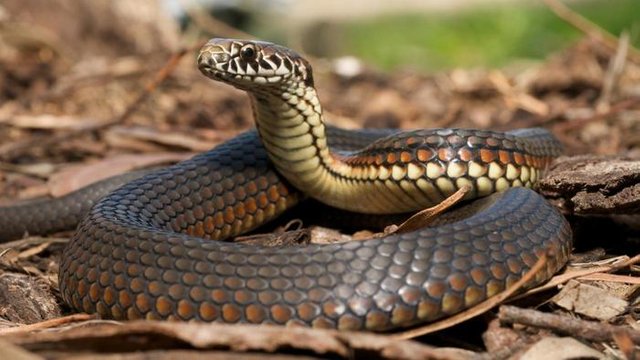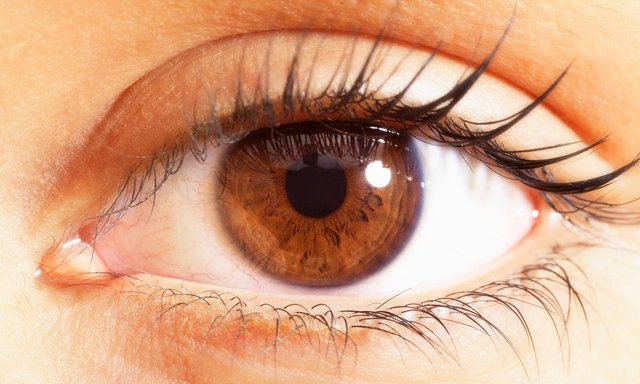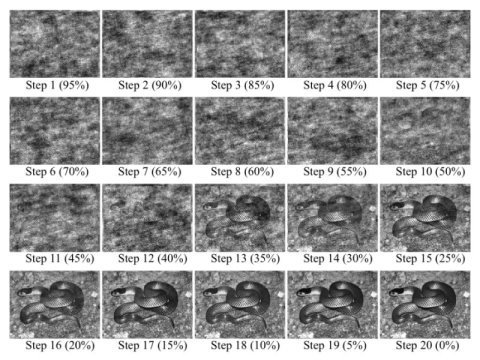Human Vision has Evolved to Detect Snakes
It has been theorized that human vision has evolved to be particularly keen in identifying dangerous animals or situations. Some recent studies have suggested that the eyes of humans and other primates may be able to more easily recognize hazardous creatures like snakes and spiders, increasing their chances of their survival (now dubbed the ‘Snake Detection Theory’). Simply put, in early humans, those who were able to detect and avoid these dangers would be more likely to survive and pass on their traits, enabling their offspring to visualize and escape these dangers as well. So even today, could our eyes be specially adapted towards identifying snakes?
The Nagoya University research team set out to test this theory; until now, it’s been difficult to compare the recognition of different animals in an unbiased way because of their different shapes, anatomical features, and the camouflage of their environment. To begin confirming (or busting) the theory, they utilized a relatively new tool utilized in psychology: Random Image Structure Evolution (RISE). They used this tool to create 20 images depicting animals (snakes, cats, birds, fish, etc) that ranged from completely blurry to completely clear; the researchers then asked study participants to look at the pictures and attempt to identify the animal. Starting with image one, the absolute blurriest, the participants would view the images in order until they could make out the identity of the animal depicted.
“Participants looked at a sequence of 20 pictures with interpolation ration starting from 95% to 0% with steps of 5%. RISE sequence gradually changes from unorganized to well discernible. Because of the algorithm that it uses, RISE produces images that allow unbiased comparison between the recognition of different animals. In the images, the animals are 'camouflaged' in a uniform way, representing typical conditions in which animals are encountered in the wild." -Nobuyuki Kawai, first author, Nagoya University Research Team Source
Interestingly enough, the snakes were generally well-identified by the six to eighth images (out of the total twenty). The other animals were typically unidentified until participants viewed the ninth and tenth images which were significantly less blurry.
"This suggests that humans are primed to pick out snakes even in dense undergrowth, in a way that isn't activated for other animals that aren't a threat.” -Hongshen He, co-author, Nagoya University Research Team Source
These findings offer strong support to the Snake Detection Theory. The results of the tests conducted using RISE are evidence that the visual systems of humans and closely related primates has evolved in a manner that allows them to identify potentially dangerous or even lethal animals. This discovery is also important for another reason; because we understand that early humans evolved to detect snakes, we can begin to further understand the evolutionary pressures our early ancestors faced!





I used similar techniques in my dissertation to quantify the amount of information that was accessible to viewers in their peripheral vision, when targets were alone vs. when they were competing with others.
That sounds really cool! Did you write about it at all here on steemit/have a link? I'd definitely be interested in checking it out!
It's in the diss but I never published it. The techniques I mostly borrowed from a series of four papers by Arthur E. Burgess, a radiologist. Search PubMed for his name and scroll through for Visual Signal Detection I-IV.
Hello @herpetologyguy,
It gives us pleasure to inform you that this post have been upvoted by Project Better.
The Mission of Project Better is to reward posts have many votes from Minnows but earn pennies.
Your payout is $0.072 before we vote on your post.
Learn more about the Project Better here! ,
Want to donate your voting power to support Project Better and earn curation rewards? Click Here!
We hope to see you continuing to post some great stuff on Steemit!
Good luck!
~BETTER~
Thank you for the support!
I saw the snake on picture #13 and the face on picture #7. I am maybe assembled the other way round :D
You're a Slytherin!!!
Please, don't spread it too loudly :)
So, back on Steemit? :D
Somehow, yes. But not writing as actively as before.
I wish I had a larger image. The first time I could barely make out the snake even at 10, but when I blew up the size and started back at one, I was able to spot it by seven! It may just be a size issue here.
It's more than just a theory, it has been proved several times.
At one of the papers I read when I wrote an article about the same topic here, it was stated that the distraction levels "focusing" on a snake cartoon were considerable (If I don't recall wrong over 50% of the time the eyes glanced towards the snake figure, instinctively checking "where is it at" even when it poses no threat).
I agree completely. It's definitely been proven more than once (I think this is just one of the more conclusive tests to date), but even still they tend to refer to it as a "theory". I'm not exactly sure why.
Perhaps because this modern society allows regressive genes to prevail. So, from time to time, a human with no snake detection traits gets bitten throwing the facts overboard :p
Definitely a plausible conclusion! So perhaps it's still just a theory because while it has been proven in most test participants, there are still a few outliers that call the results into question.
Well, a similar case would be the disappearance of the wisdom teeth. Some people are already not having them. As I explain in my article: having them does not kill you. So, humans rely on random mutations until they vanish from our race.
In the same way, not having the snake detection trait does not kill, most, of us. So, we also rely on random mutations.